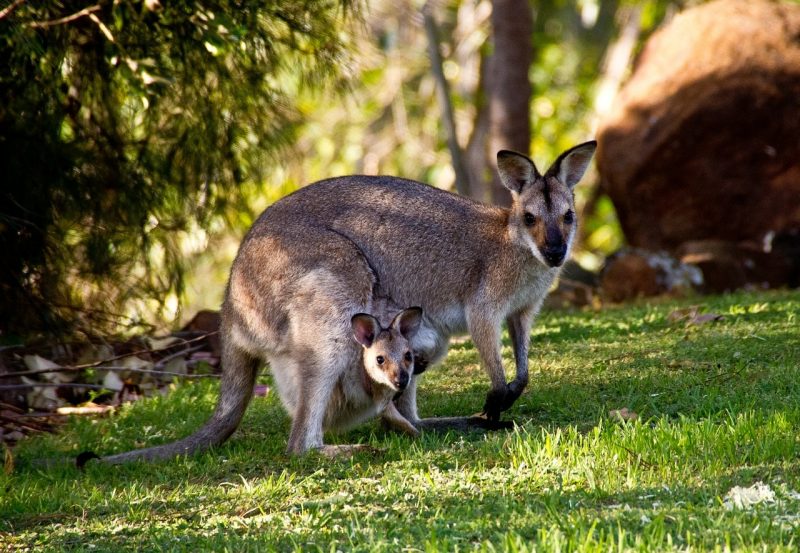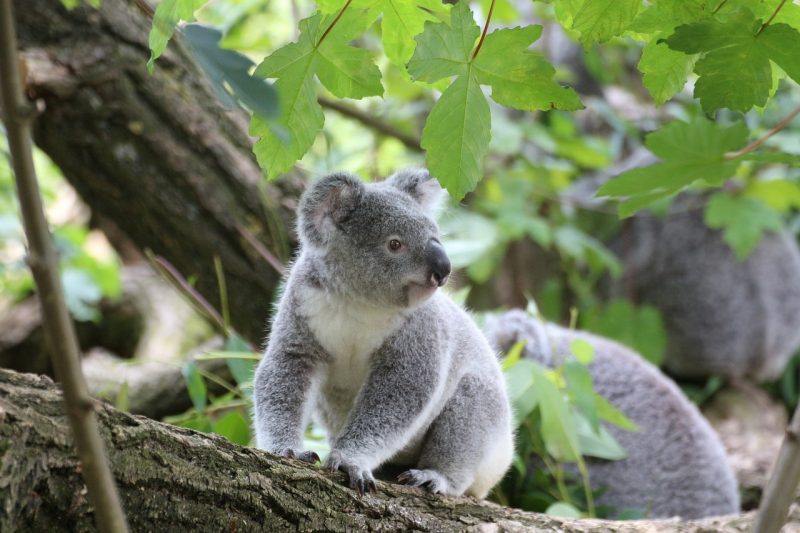The marsupials They comprise a very large group of mammalian animals, characterized by a common behavior that they have when their young is born: they transport it in a bag located in the abdomen, precisely a part of the body called the pouch that is only present in this type of animal. For instance: kowari, numbat, shorttail, opossum.
Marsupials, when developing in this way, have a very short gestation period (between 10 and 14 days) and complete growth within the pouch, which is considered the external environment of the body. This form of gestation is quite associated with their form of reproduction, since these animals belong to the viviparous group, but with a reproductive system very different from that of placentals.
The female marsupial It has a double uterus and three vaginas, of which the two lateral ones are used in fertilization and the offspring are born through the central one. Males, for their part, have a sometimes bifid penis with an extra abdominal scrotum. When the young are born, at a very early stage of development, they crawl on a line of saliva to reach the pouch, where they attach to the nipples and remain for a long time.

Examples of marsupial animals
- Marmosa
- Marsupial moles
- Dunnart
- Opossum
- Walabi parma
- Kowari
- Thylacine
- Long-tailed kangaroo-rat
- Bilby
- Filandro
- Numbat
- Tasmanian Devil
- Opossum Mice
- Cuoca
- Thylacinidae (extinct)
- Eastern wallaby (extinct)
- Onychogalea lunata (extinct)
- Red kangaroo
- Short
- Western gray kangaroo
- Sugar glider or sugar glider
- Monito de Monte
- Badjcinus (extinct)
- Opossum
- Southern Antequino
- Short nosed echidna
- Bandicut
- Antequino
- Koala
- Dasiuro
- Tammar kangaroo
- Minor Bilbi (extinct)
- Nimbacino (extinct)
- Uombat
- Thylacinus potens (extinct)
- Couscous
- Common Ualaru
- Plan
- Mulgara
Physical characteristics and behavior of marsupials
This class of animals has a sense of smell very developed and usually have a height that ranges from ten centimeters to more than one and a half meters, and their main characteristic is having a long and strong tail, which in some cases is even a means of locomotion in itself.
Another common feature of marsupials is having a single teething, but groups can be found that have developed very different habits in terms of food. Some species are omnivorous, while others are herbivorous: they have developed various ways of feeding to make better use of the food, since they are not able to digest cellulose because they do not have the appropriate enzymes.

Marsupial classification
It is common for marsupials to be classified according to the region of the planet where they can be found:
- Australian Marsupials. They are the most common in the world, with more than 200 species, including the longest and shortest.
- Argentine Marsupials. They include 24 species distributed from northern Argentina to the Patagonian grasslands.
- Colombian Marsupials. They include 29 species, some of which are only found there.
- Tasmanian Marsupials. Among which stands out the Devil (or Devil) of Tasmania.
- Mexican marsupials. A group of few species that is distributed throughout Central America and some parts of South America.
Similarities and differences with placentals
The group of marsupial mammals is usually confused with that of the placental mammals, since both have anatomical structures that have the function of maintaining the care of the young once it is born.
However, marsupials give birth much earlier than placentals, and therefore must control the environment of external gestation by months: in the case of placentals, the role of the placenta, where internal gestation occurs, is much more important.
Other distinguishing physical characteristics are that the teeth of the marsupials it contains more incisors, that it has a slightly lower body temperature than the placentals, and that it has a brain smaller in size than these.
